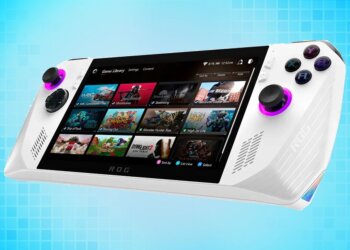When Nintendo introduced the Switch 2, it stirred quite a buzz by announcing that expanding the console’s memory would need cards based on the microSD Express standard. This shift caused an avalanche of demand both online and in physical stores, where sellers quickly found their shelves empty. In Japan, the popular tech haven Hermitage Akihabara reported a staggering sale rate, with store staff revealing that over 337 cards were being snapped up every hour. The response was unexpected, especially considering these microSD Express cards carry a heftier price tag compared to their regular counterparts.
If you’re planning to upgrade with microSD Express, be prepared for the cost. Take for example the Lexar 1TB Play microSD card. Normally, it’s priced at $129.99 on Amazon, but is currently on sale for $69.99. This card offers a read speed of up to 160 MB/s and a write speed of 100 MB/s, which is decent, though still lags behind the console’s internal storage speed. Meanwhile, if you opt for the microSD Express version, you’ll be greeted with a blistering 900 MB/s read speed and a 600 MB/s write speed. But, as you’d expect for such performance, it doesn’t come cheap. The 1TB Play Pro microSD Express card from Lexar originally costs $199.99, though it’s discounted to $172.63 right now, which is still more than twice the price of its non-Express sibling.
Despite the Switch 2’s microSD Express requirement weighing heavily on Nintendo fans’ budgets, these cards were flying off the shelves following Nintendo’s announcement. Interestingly, this wasn’t the work of scalpers, as reports suggest that about 80% of purchasers only grabbed a single card, with a maximum of three per customer. It’s likely these buyers are individuals ready to enhance their Switch 2 in anticipation of its release.
The microSD Express standard, unveiled back in 2019, hasn’t really caught on until now, mostly because of its steep cost in contrast to both non-Express microSD cards (preferred for portable storage) and SSDs (ideal for larger, fixed storage needs). While many gaming consoles allow internal memory upgrades by swapping out the SSD, it’s a cumbersome process. At the very least, it demands opening the backplate and navigating through some settings.
Nintendo, known for delicately discouraging users from tinkering with its console hardware, seems to prefer the more user-friendly path of memory expansion through microSD Express cards. This upgrade could prove vital, as the console is set to welcome several new AAA titles, which could max out its 256 GB internal storage in no time. By opting for a microSD Express card, you can have all your favorite games readily accessible on your Switch 2, anytime you want.
For all the latest updates in gaming news, reviews, and more, make sure to follow Tom’s Hardware on Google News. Hit that Follow button to stay in the loop.









![[PlayStation 5] Review of S. Prysm Destroyer](https://www.pixbulletin.com/wp-content/uploads/2025/04/PlayStation-5-Review-of-S-Prysm-Destroyer-360x180.jpg)






























![[PlayStation 5] Review of S. Prysm Destroyer](https://www.pixbulletin.com/wp-content/uploads/2025/04/PlayStation-5-Review-of-S-Prysm-Destroyer-75x75.jpg)
